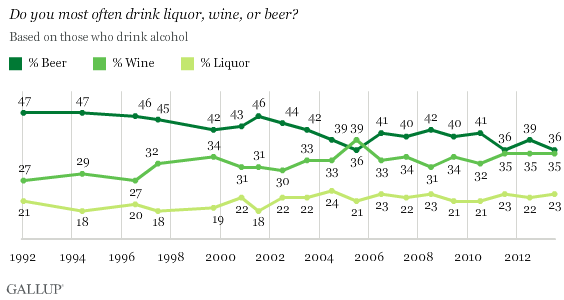The short article above points out that while Dogfish Head and Sam Adams may argue their “overrated” status as simply a result of their popularity, the truth is that a majority of the posts on the Beer Advocate thread that started all this, was based on the quality of product not matching the price charged for some of the more hyped beers.
I can see both sides of this argument. It is understandable that if you are going to spend more money on something, you expect it to be better than something that costs less. The other factor however, is that some beers simply cost more to make. Dogfish Head makes several seasonal beers that cost anywhere from $8-$16 for a 25 oz bottle. These beers will include ingredients that are not typically in traditional beers, causing the beer to cost more to produce and in turn, more to buy. However, most of these beers are unlike anything that costs less, both in magnitude of flavor and texture. Due to the intensity of these beers, an individual’s personal taste preferences play a much bigger role.
This leads me to believe that the reason people find Dogfish Head overrated, is because of both price and popularity. I think this is an overarching issue for craft beer in general; public interest in craft beer has grown tremendously without public knowledge of craft beer growing to match the interest. Many consumers are buying the higher end craft beers without fully understanding what it is exactly they are spending their money on, why it costs the way it does and when it would be appropriate to drink said beer.
Dogfish Head 60 Minute IPA costs around $8-$10 a six pack. 120 Minute IPA costs the exact same, but for only one 12 oz bottle. It has close to the same amount of ingredients as the six pack and takes much longer to produce. Economically, it makes sense why it costs what it does. However, this is not a “better” beer and it can never take the place of 60 Minute IPA in the situations where 60 Minute really shines. If you are having a barbecue on a hot summer day, I do not recommend you drink a six pack of a sweet, syrupy, 18% alcohol beer.
What is the right way to price beers? For beers brewed in America, I feel the current prices make sense. Granted, I’m comfortable enough in my knowledge to know what I’m getting into if I decide to spend a bit more on something. I’ve rarely (if ever?) spent more than $10 on a beer and didn’t like it. This isn’t to say that I have some sort if refined palate or anything, I just know what styles I appreciate and enjoy more and what styles are on the opposite end of that spectrum. There are certainly beers I would not pay more than $10 on. Not because they are bad beers, they are simply not styles that I like enough to spend that much on. I’ll happily spend more on a good barley wine or stout, but a Flanders ale? Not so much.
But what tools are available to the average consumer who may not know what their preferences are? As craft beer becomes more popular, I see the need for more professionals who have a strong knowledge of beer being needed in customer facing environments to help guide the consumers to the best choice for them. The staff at a retailer, restaurant or bar should be knowledgeable enough on their selection to help guide and educate consumers on what beers they should try and which ones they should be steering clear of. Otherwise, without these resources we are doomed to continue in the future of these polar views of what beer is good and what is overrated.
